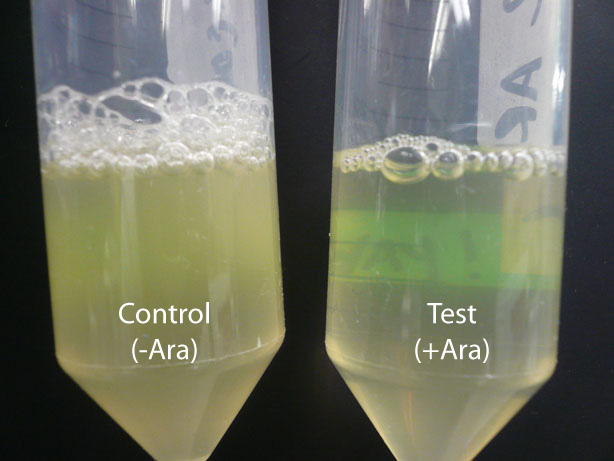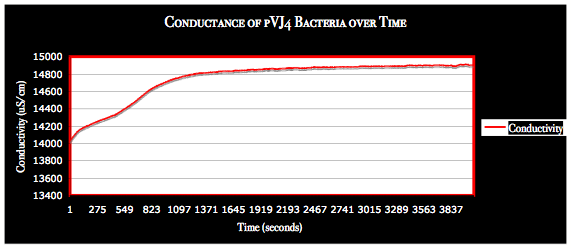Team:Brown/Project/Analysis
From 2008.igem.org
(→Optical Density) |
NeilParikh (Talk | contribs) (→Optical Density) |
||
| Line 6: | Line 6: | ||
Initially we introduced arabinose to the culture of cells and allowed the cultures to sit at room temperature for several hours and measured the optical density before and after the cells lysed. 0.2% arabinose by mass was added to the cultures. | Initially we introduced arabinose to the culture of cells and allowed the cultures to sit at room temperature for several hours and measured the optical density before and after the cells lysed. 0.2% arabinose by mass was added to the cultures. | ||
| - | [[Image:Od-before-after-cell-lysis.jpg|left|thumb|480px|This data indicates that significant lysis occurs over a period of a few hours, confirming that the lysis cassette functions as predicted.]] | + | |
| - | [[Image:Control-vs-test-lysed-cells.jpg|right|thumb| | + | <table width="900" border="0" cellspacing="0" cellpadding="0"> |
| + | <tr> | ||
| + | <td><div align="center">[[Image:Od-before-after-cell-lysis.jpg|left|thumb|480px|This data indicates that significant lysis occurs over a period of a few hours, confirming that the lysis cassette functions as predicted.]]</div></td> | ||
| + | <td><div align="center">[[Image:Control-vs-test-lysed-cells.jpg|right|thumb|400px|The culture on the left has no Arabinose added and the cells did not lyse. The tube on the right had 0.2% Arabinose by mass added and the cells lysed.]]</div></td> | ||
| + | </tr> | ||
| + | </table> | ||
| + | |||
Revision as of 06:44, 29 October 2008
Optical DensityIn order to test the mechanism of the SRRz lysis cassette, we took optical density measurements as cell lysis occurred. The construct we used for testing was contained on the pVJ4 plasmid. This plasmid was obtained from the Mekalanos lab at HMS and contained the SRRz gene cassette in a pBAD18 plasmid. Initially we introduced arabinose to the culture of cells and allowed the cultures to sit at room temperature for several hours and measured the optical density before and after the cells lysed. 0.2% arabinose by mass was added to the cultures.
NaCl Testing
Salt concentrations originally tested are listed below. Further tests are to be run where the greatest resistance jump occurred to determine the exact concentration needed to see a significant resistance decrease due to cell lysis.
Resistance Testing
Conductivity Testing
|
 "
"




